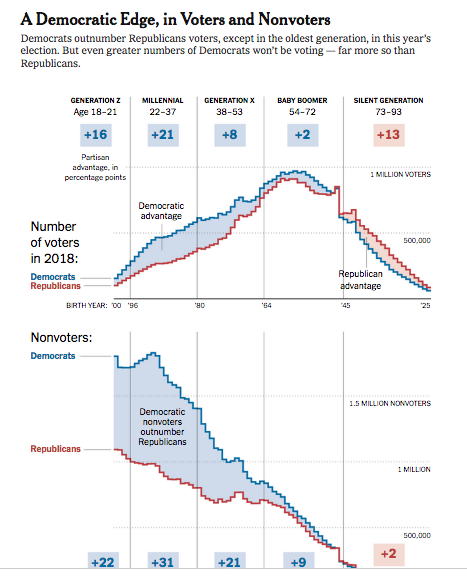Amid the political turmoil of the past few years, there have been faint rustlings of a democratic revival. States have begun to take steps to empower citizens by making voting easier and more inclusive. Since 2015, 12 states have adopted automatic voter registration; voters in Florida will decide in November on a ballot initiative to restore voting rights to felons; in New York and Virginia, Democratic governors have done so (in the case of New York extending these rights to parolees); and the District of Columbia may lower its voting age to 16.
These bright spots in an otherwise bleak political landscape hint at a path forward for American democracy. Seldom, if ever, have Democrats had so much to gain by increasing turnout. At the same time, the generational tide has turned decisively in the Democratic Party’s favor, with millennials poised to push the electorate steadily to the left. As these two trends converge over the next decade, major election reforms long written off as unrealistic will suddenly become politically viable.
While it is tempting to view elections as being decided in the moment, much of the groundwork is set in place decades earlier. Looking at survey data from the 1950s, political scientists observed that voters who came of age during the Great Depression identified as Democrats at much higher rates than prior and subsequent generations. The Great Depression and the remaking of American government during the New Deal left a lasting imprint on a generation of voters. A 2014 study by Andrew Gelman and Yair Ghitza demonstrates that the “political events of a voter’s teenage and early adult years, centered around the age of 18, are enormously important in the formation of these long-term partisan preferences.”




